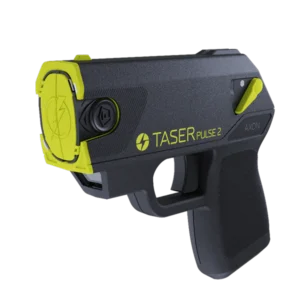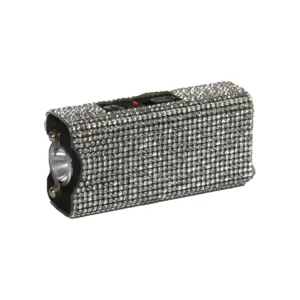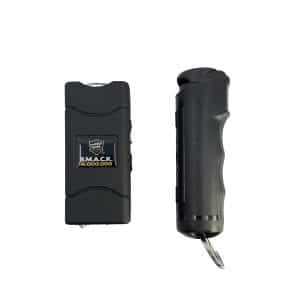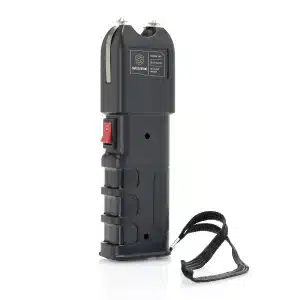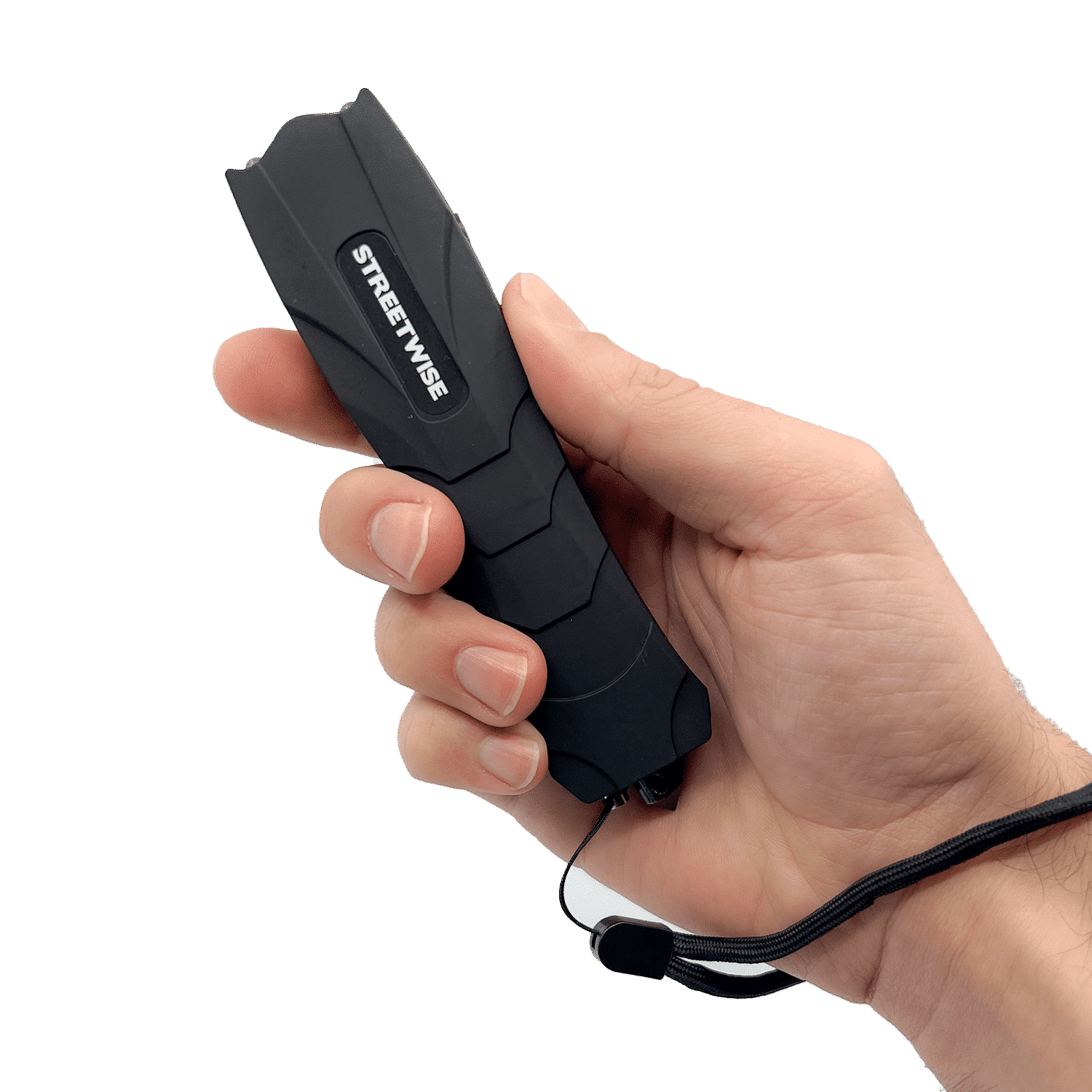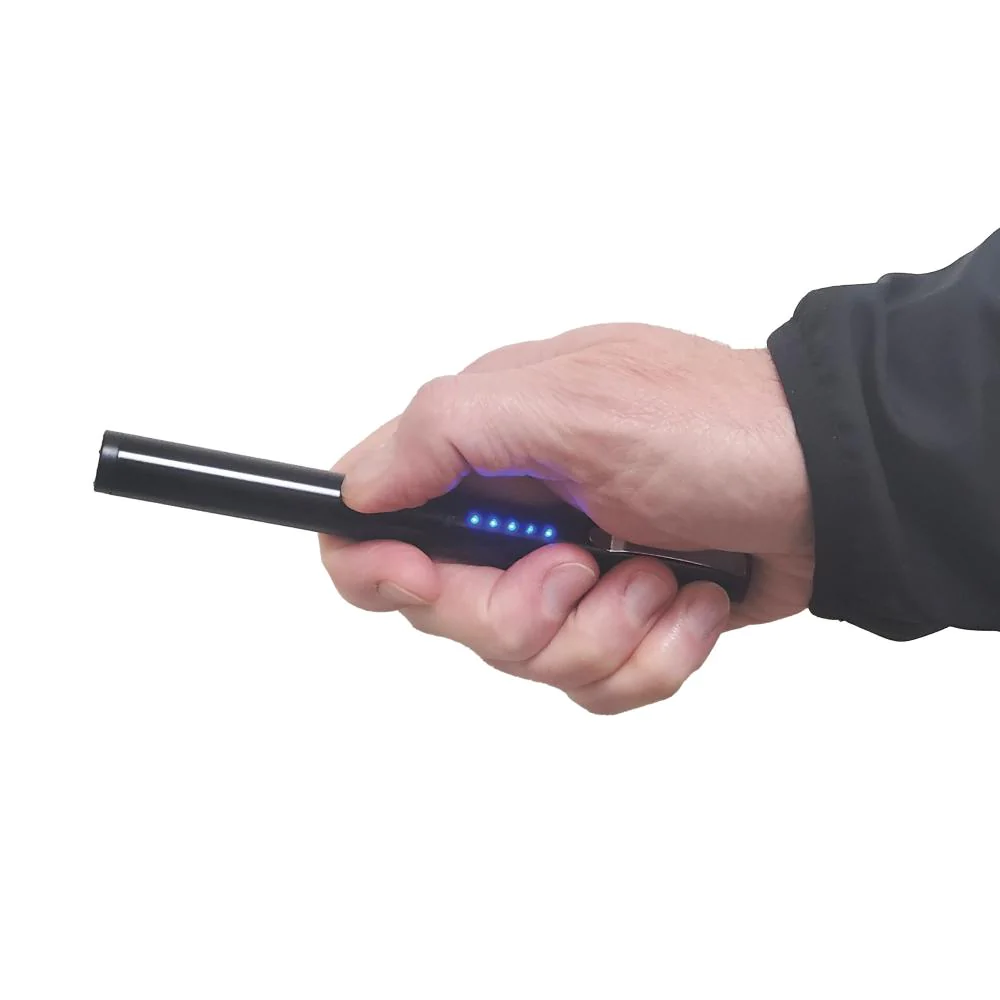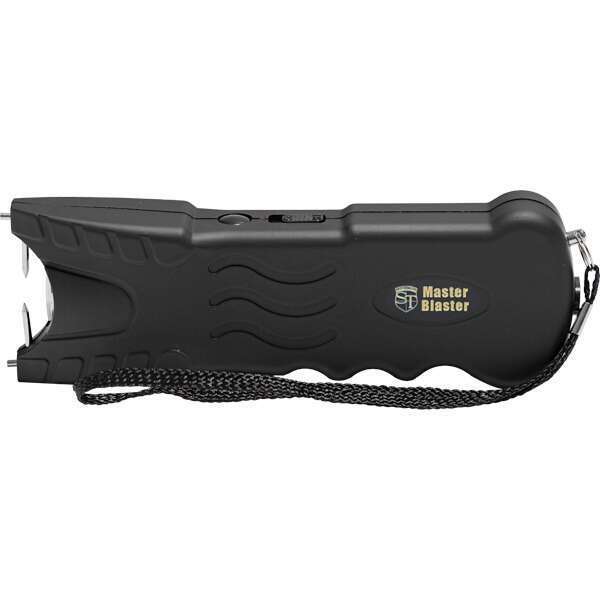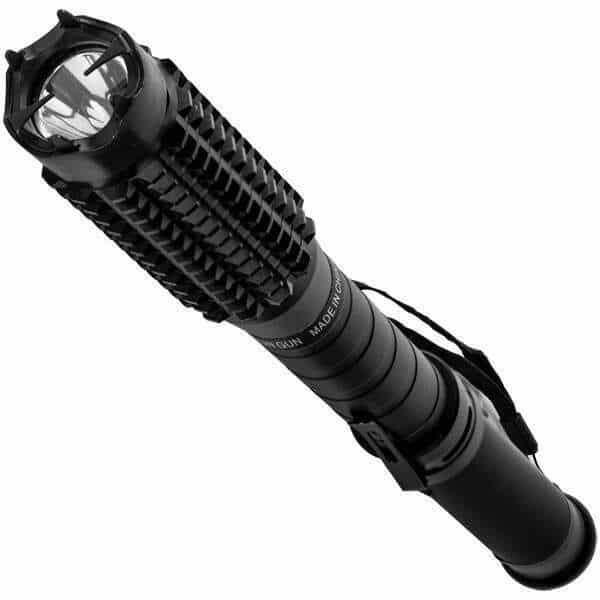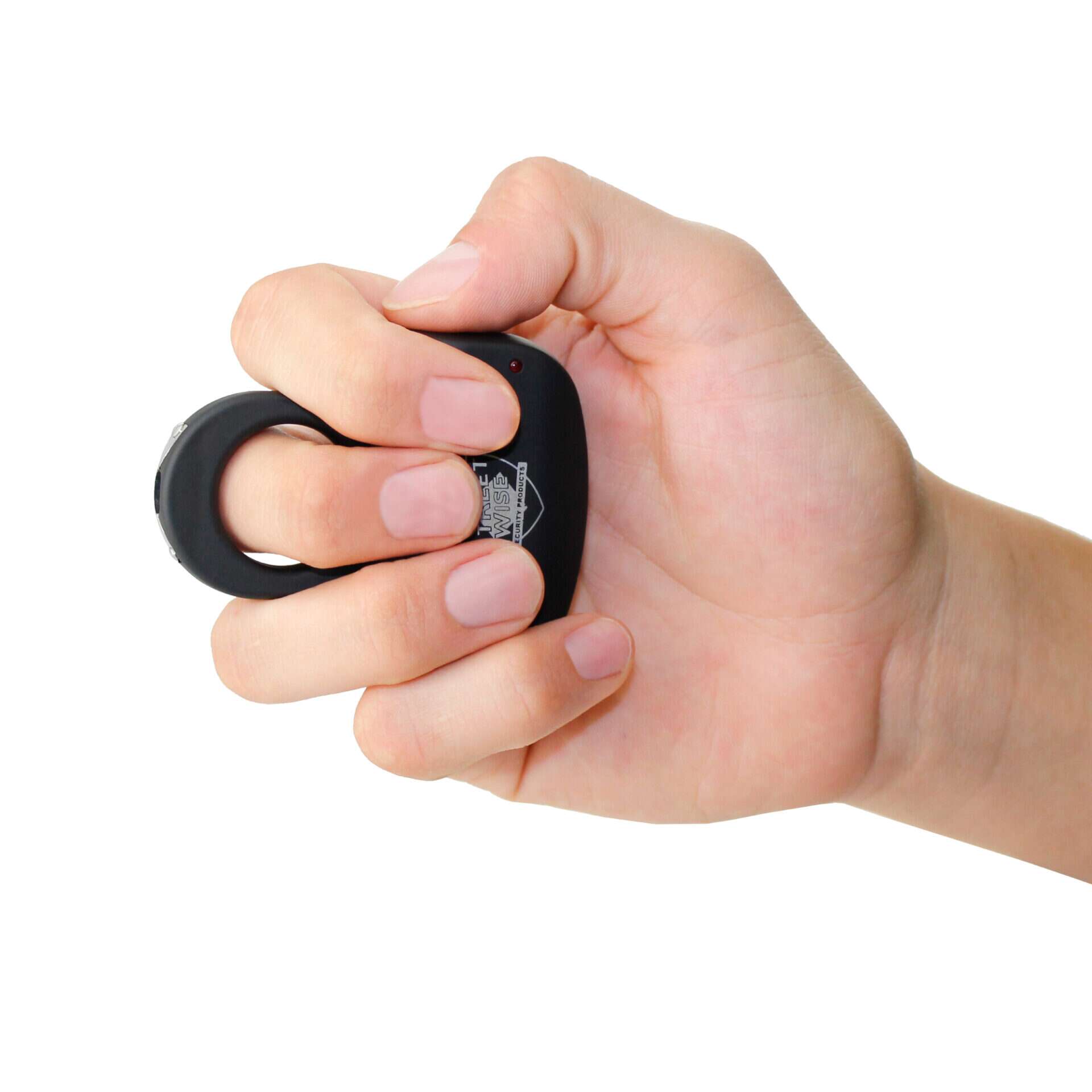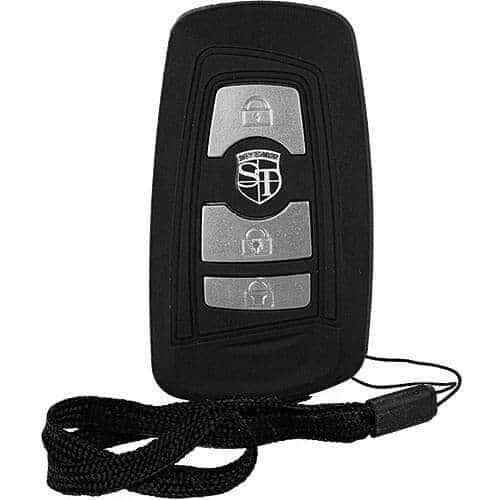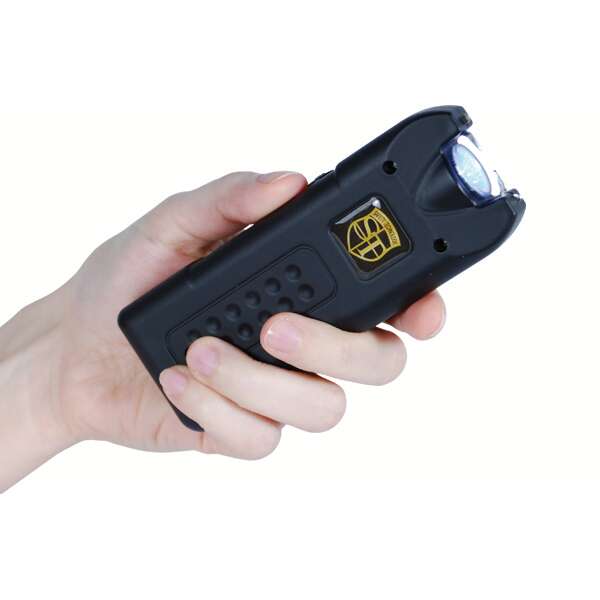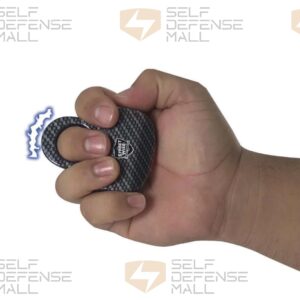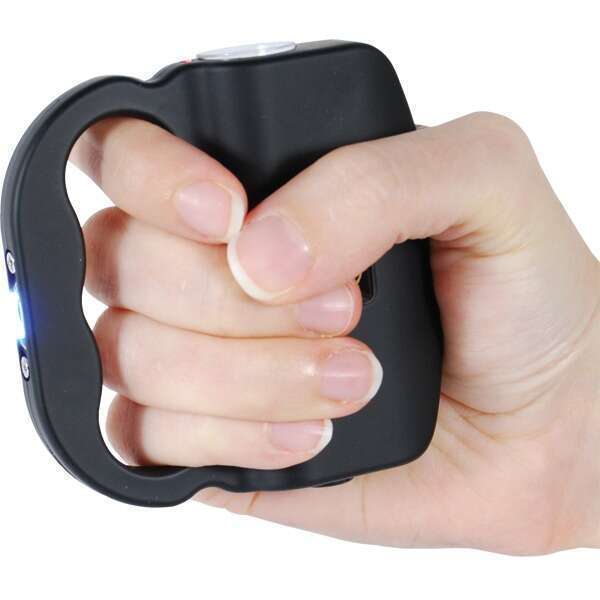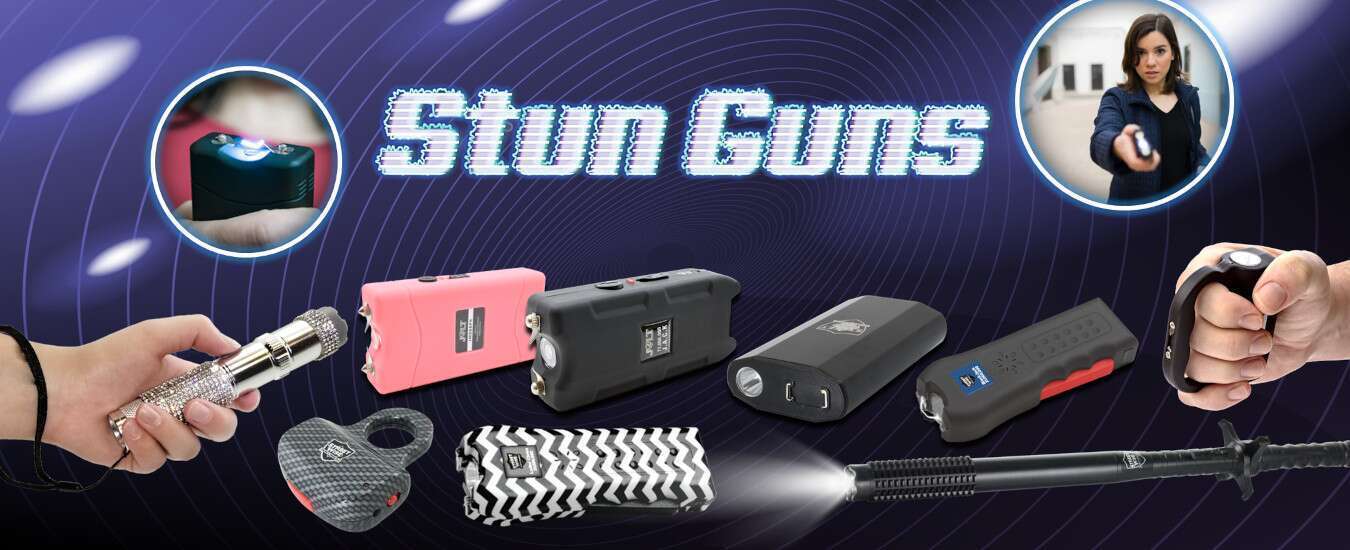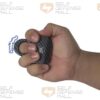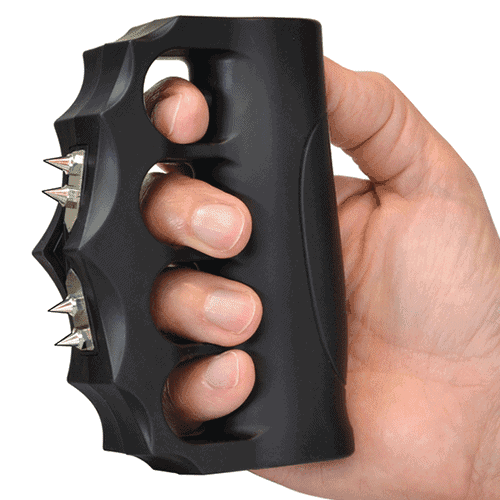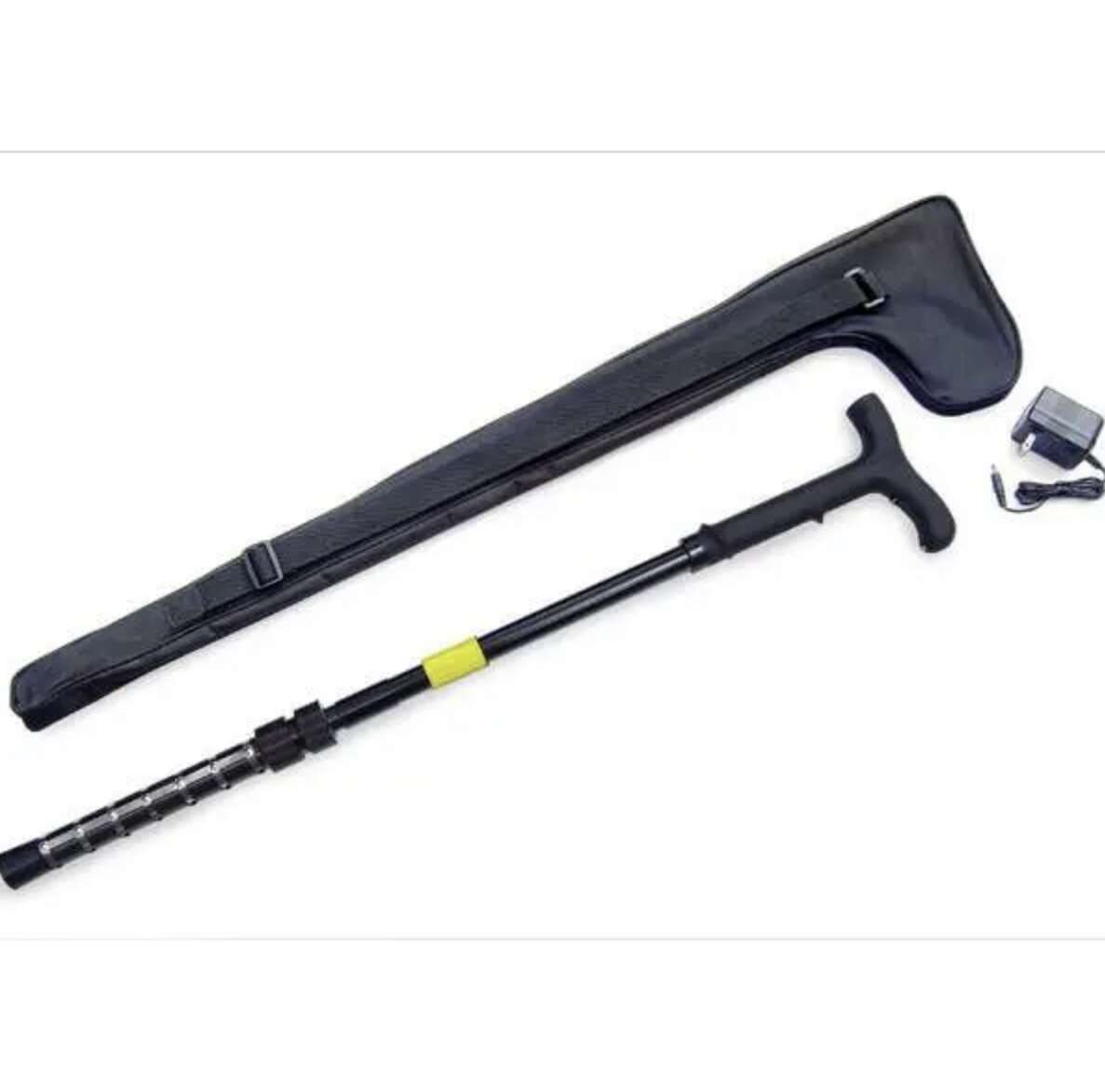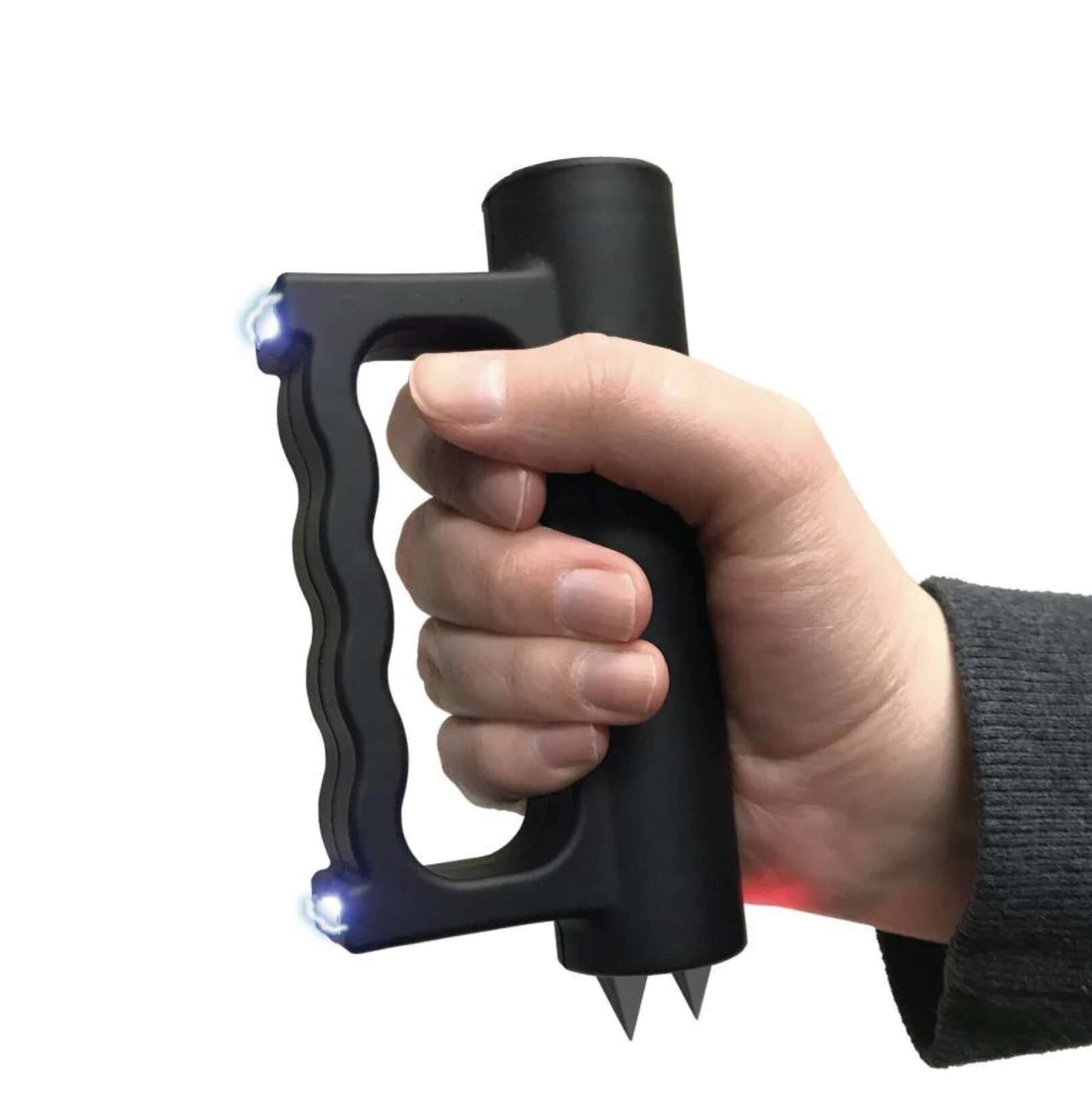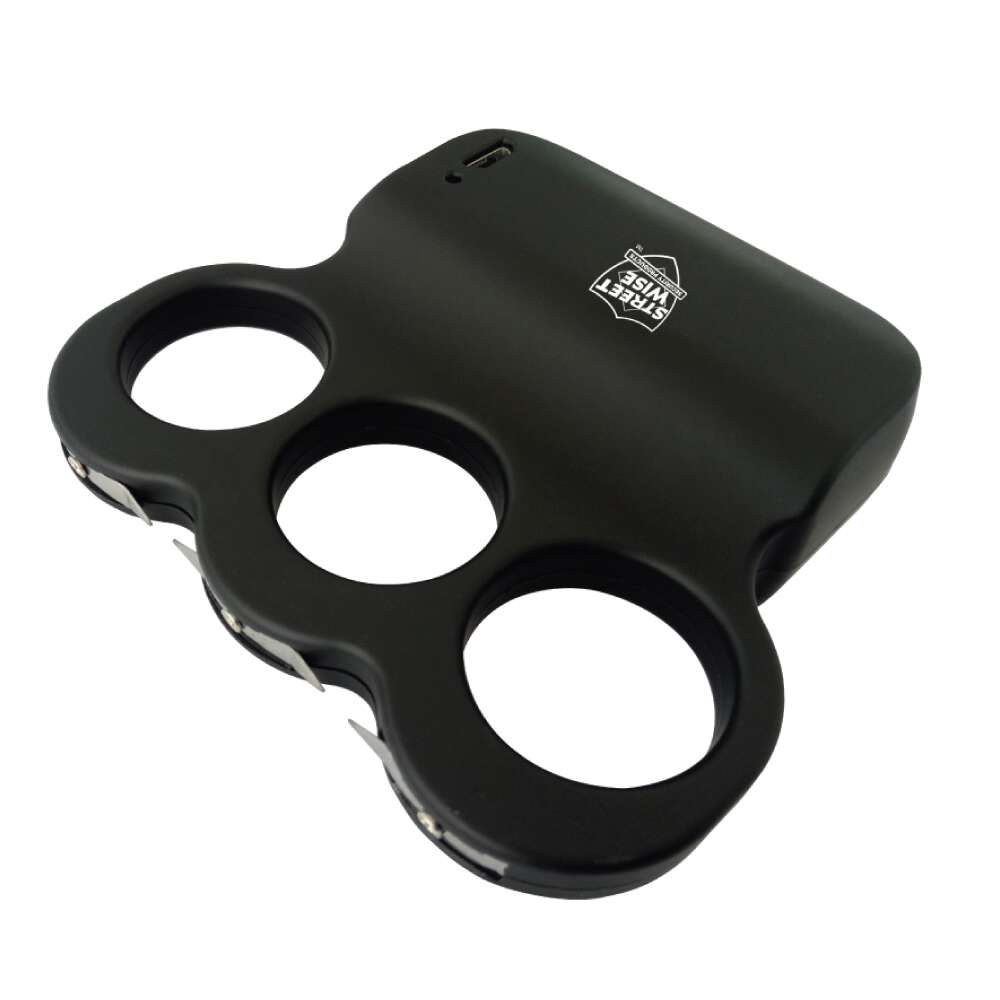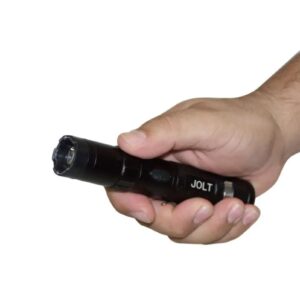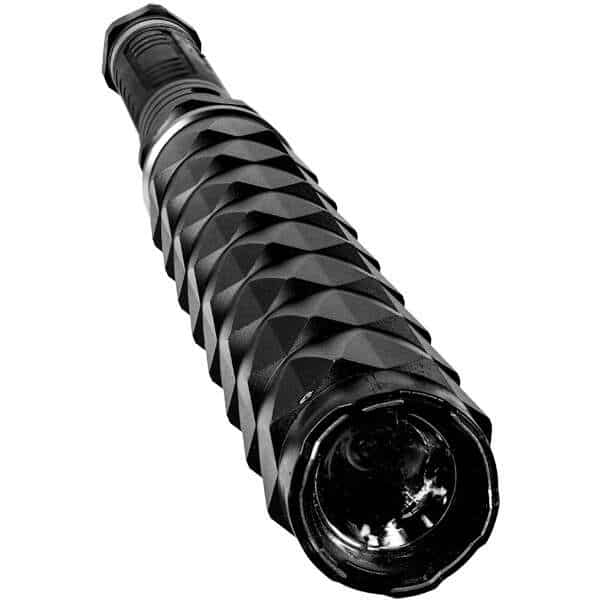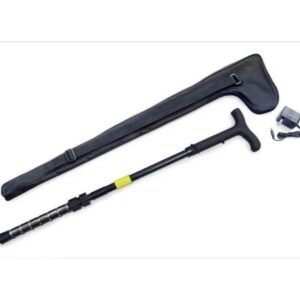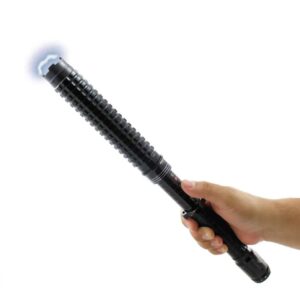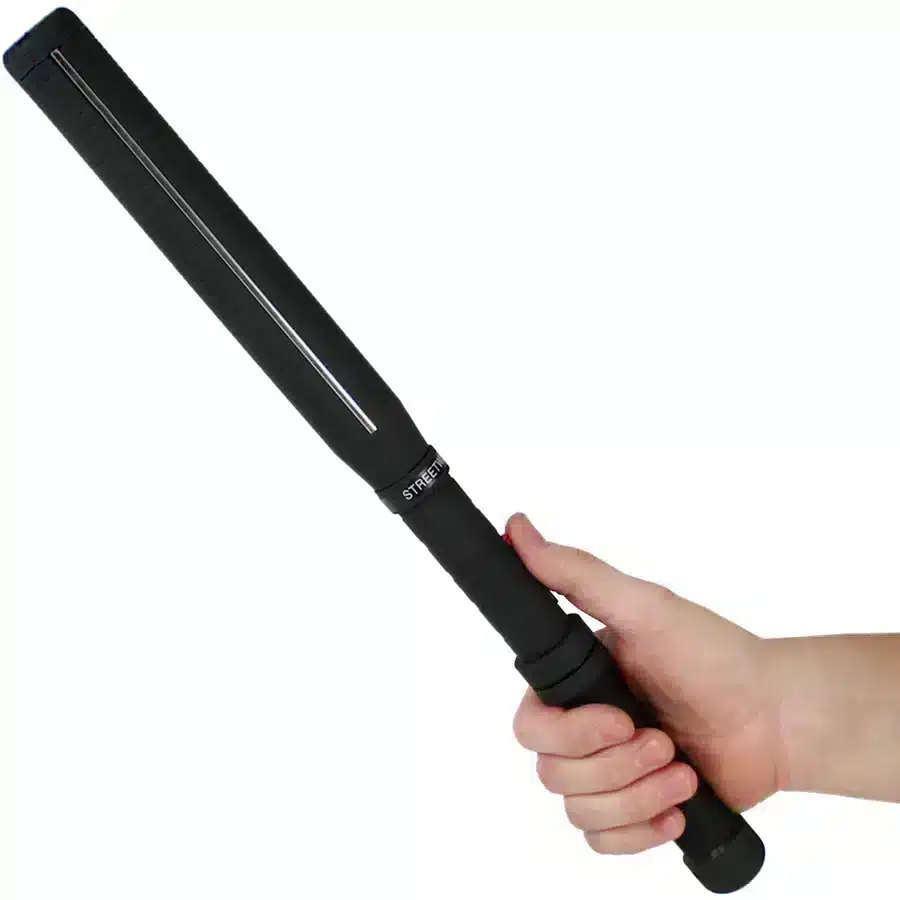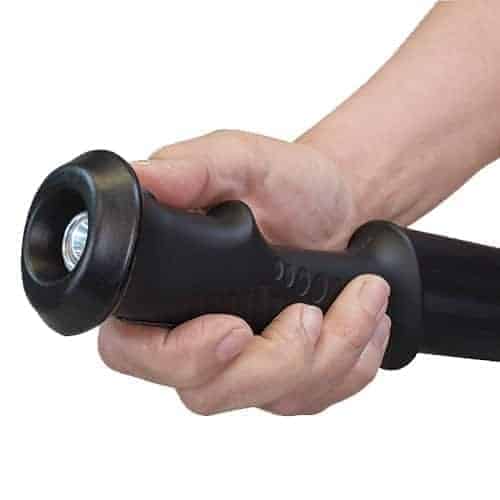The Most Asked Questions About Stun Guns
Here are the top 10 questions about stun guns:
- What is a stun gun and how does it work?
- Are stun guns legal?
- What effects does a stun gun have on the human body?
- How do I use a stun gun correctly?
- Can a stun gun kill someone?
- What is the difference between a stun gun and a Taser?
- Can stun guns be used for personal defense?
- What should I consider before buying a stun gun?
- How can I maintain my stun gun effectively?
- Where can I buy a stun gun?


What is a Stun Gun and How Does It Work?
Stun guns are non-lethal weapons designed to incapacitate a potential threat by delivering a high-voltage, low-amperage shock. The primary purpose of a stun gun is to disrupt the body’s communication system, the nervous system, without causing significant physical harm.
The stun gun works by generating a high-voltage electric charge through a pair of conductive electrodes at the front of the device. When applied to an attacker, the charge causes rapid muscle contractions which can temporarily immobilize the person, giving you a chance to escape or call for help.
Stun guns operate on the principle of disrupting the electrical signals within our bodies. Our bodies use electricity to communicate between the brain and muscles. When a stun gun is applied, it sends a high voltage, low amperage shock into the system. This overwhelms the normal electrical signals causing disorientation and loss of balance, rendering an attacker incapacitated.
There are two main types of stun guns: Contact stun guns, which require you to touch the assailant with the device, and projectile stun guns, like Tasers, which can be used from a distance.
Stun guns can vary significantly in design, with some models designed to be concealed as everyday items like lipstick or mobile phones. They also vary in voltage, size, and additional features such as flashlights or alarms.
When choosing a stun gun, it’s important to consider its power output, measured in volts. The higher the voltage, the more effective the stun gun will be at incapacitating an attacker. However, it’s also crucial to note that a stun gun’s stopping power comes not just from voltage but also from the strength of the amperage and the duration of the shock.
Stun guns are powered by batteries, either rechargeable or replaceable. Many modern stun guns come with built-in rechargeable batteries and a charging cord. These can often be plugged into any standard wall outlet for convenient charging.
While stun guns can be a powerful self-defense tool, it’s important to remember that they should be used responsibly and in accordance with local laws and regulations. Furthermore, they are only one element of a comprehensive personal safety plan, which should also include awareness of your surroundings, avoidance of risky situations, and potentially other self-defense techniques.
Please note that the effectiveness of a stun gun can vary depending on several factors, including the specific device used, the duration of the shock, the location of the shock on the body, the clothing of the person being stunned, and the individual’s specific physiological response. That’s why it’s important to become thoroughly familiar with your stun gun and how to use it correctly before you find yourself in a situation where you might need it.

Are Stun Guns Legal?
Stun guns, like any other self-defense tools, are subject to varying degrees of regulation around the world. This is largely because their potential misuse can lead to serious harm. While stun guns are generally considered non-lethal weapons, they are capable of inflicting serious injury if misused or used irresponsibly.
In the United States, stun gun laws vary by state. Some states allow citizens to freely purchase and carry stun guns with no restrictions, while others require permits or impose other limitations. Several states even ban their possession outright.
In California, for example, stun guns are legal for civilian use without the need for a permit, but the state has restrictions on the sale and possession of stun guns for people with certain criminal convictions. Meanwhile, states like Hawaii, New York, and Rhode Island ban stun guns altogether. Therefore, it’s critical to understand the laws of your particular state before purchasing or carrying a stun gun.
Other countries have different regulations. In many European countries, including the United Kingdom, stun guns are considered firearms and are therefore completely banned for civilian use. Other countries, like Canada, classify stun guns as prohibited weapons, making their possession illegal without special authorization.
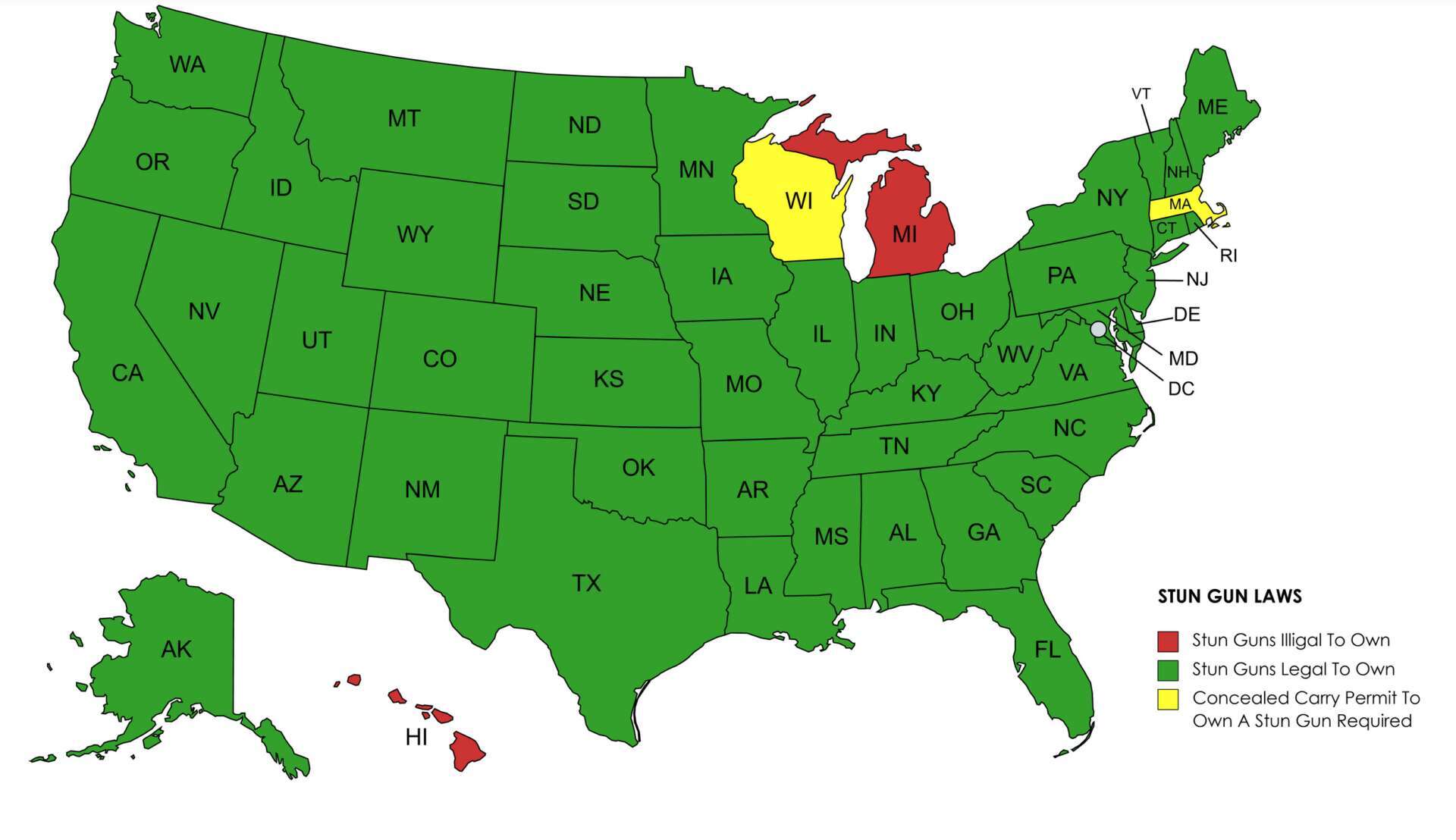
Bear in mind that even within countries where stun guns are legal, local laws and restrictions may apply, so it’s always best to check with local law enforcement agencies or legal professionals if you’re unsure.
Even where stun guns are legal, there may be restrictions on where they can be carried. Schools, government buildings, and airports are common places where stun guns are typically not allowed. Therefore, before you decide to carry a stun gun, be sure to research and understand the specific restrictions in your location.
Also, it is important to note that just because a stun gun is legal to possess does not mean it can be used indiscriminately. Using a stun gun against someone without lawful cause can result in criminal charges such as assault or battery.
Lastly, although stun guns can be purchased online, many online retailers abide by local laws and restrictions and will not ship to regions where stun guns are banned or heavily restricted. Therefore, purchasing a stun gun online should also be done in accordance with local laws.
In conclusion, the legality of stun guns varies greatly by location. Always ensure you’re familiar with the laws in your area before purchasing or carrying a stun gun.
What Effects Does a Stun Gun Have on the Human Body?
Stun guns are designed to disrupt the body’s electrical signals, leading to a variety of effects that can incapacitate an individual temporarily. However, it’s crucial to note that while stun guns are classified as non-lethal weapons, they can potentially cause harm if misused.
The primary effect of a stun gun is a rapid, involuntary contraction of muscles. The high-voltage, low-amperage charge interferes with the body’s own electrical signals, causing a sudden and intense contraction of the muscles in the area where the stun gun is applied. This effect can lead to the person being temporarily immobilized.
Another common reaction to being stunned is disorientation and confusion. The overload of electrical signals can interrupt the normal function of the brain, leading to a temporary state of confusion and disorientation. This can create an opportunity for the victim to escape from an attacker.
The shock from a stun gun can also cause intense pain. While the level of pain can vary depending on the individual and the specific circumstances, the shock is often described as being very painful. This pain, combined with the muscle contractions and disorientation, can act as a strong deterrent.
While stun guns aim to incapacitate without causing permanent harm, they can cause injuries in some cases. For instance, the force of the muscle contractions can potentially result in strains or sprains. Additionally, if a person falls as a result of being stunned, they may suffer further injuries from the fall.
Stun guns can have a stronger effect on individuals with pre-existing health conditions. For example, individuals with heart conditions could potentially face a risk of cardiac arrhythmia or cardiac arrest, although such incidents are rare. For this reason, stun guns should be used responsibly and only in situations where self-defense is necessary.
There are also psychological effects to consider. Being stunned can be a traumatic experience, and individuals may experience fear, anxiety, or stress following an incident. This is another reason why stun guns should be used responsibly and only when absolutely necessary.
It’s worth noting that the effects of a stun gun are typically temporary. Once the current stops, the body’s electrical signals should return to normal relatively quickly, and the individual should regain control of their body.
Remember, while the purpose of a stun gun is to provide a non-lethal means of self-defense, they can be dangerous if not used properly. They should only be used as a last resort when escape is not possible, and there is an immediate threat to personal safety.
The next question we’ll delve into is “How do I use a stun gun correctly?” which will be addressed in the following response.
How Do I Use a Stun Gun Correctly?
Stun guns are effective self-defense tools, but only when used correctly. It’s crucial to understand how to use your stun gun safely and effectively to ensure your protection and the legality of your actions.
First and foremost, you should familiarize yourself with the stun gun you own. Each model may have different operational controls, safety features, and methods of use. Reading the owner’s manual thoroughly is a must-do. Practice gripping the device, activating the safety, and triggering the stun action to ensure you’re comfortable with its operation.
Stun guns work by direct contact with the attacker. When in a dangerous situation, aim for areas of the body where the stun gun can make the most impact. The chest, neck, and lower torso (around the hip area) are key targets because they contain large muscle groups and are closer to the central nervous system.
Safety is a crucial aspect of using any self-defense tool, and stun guns are no exception. Many stun guns come with safety switches or buttons that prevent accidental discharge. Always ensure the safety is engaged when the stun gun is not in use.
Effective use of a stun gun requires close proximity to the attacker, which might not always be ideal. If possible, use the stun gun as part of a broader strategy of self-defense, which includes verbal deterrence, physical distancing, and calling for help or alerting others.
Do remember that the main goal of using a stun gun is to create an opportunity to escape. After delivering a shock to an attacker, use that time to distance yourself from the situation and seek help immediately.
Be aware of your local laws. While stun guns are legal in many places, using them inappropriately or against certain protected classes of people (for instance, law enforcement officers) could result in legal consequences. Always use a stun gun within the limits of the law and only in legitimate self-defense situations.
Maintaining your stun gun is also part of its correct usage. Regularly check the battery status and test the device to ensure it’s working as expected. Some stun guns come with a built-in test feature or indicator light for this purpose.
Lastly, it is advisable to seek professional training. Just as with any other self-defense tool, proper training can enhance your ability to use a stun gun effectively and safely. Many self-defense classes and workshops provide training on how to use stun guns.
In the next section, we’ll address the fifth question: “Can a stun gun kill someone?” This will further explore the potential dangers and considerations of using stun guns.
Can a Stun Gun Kill Someone?
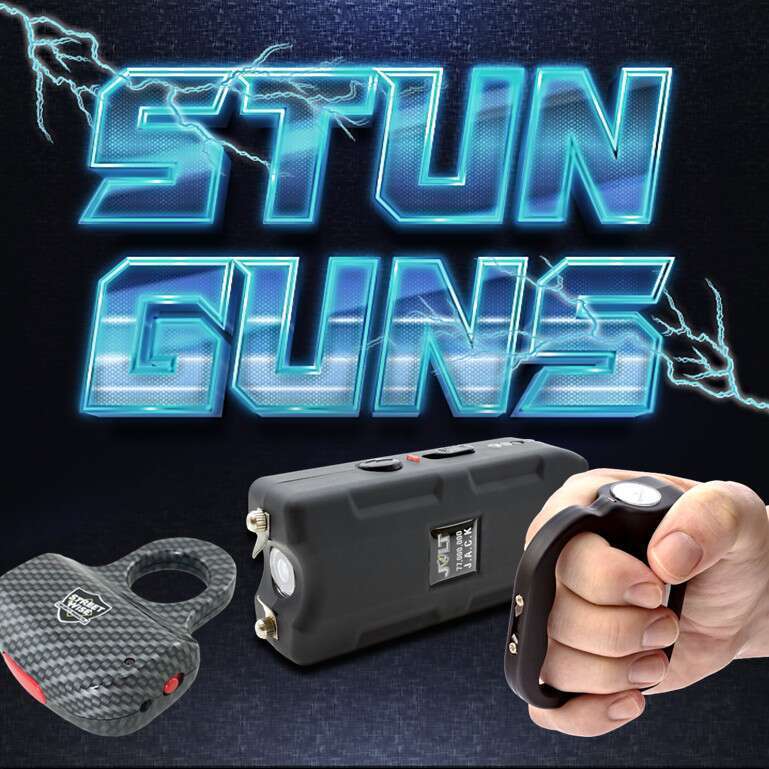
The main risk associated with stun guns comes from secondary effects. For instance, if a person is stunned and falls, they could hit their head or suffer other injuries from the fall. Depending on the circumstances, such injuries could potentially be serious or even fatal.
Additionally, there is a small risk associated with individuals who have underlying health issues, particularly heart conditions. The shock delivered by a stun gun could, in theory, disrupt the rhythm of a person’s heart, potentially leading to a condition known as ventricular fibrillation. This is a serious condition that can be life-threatening if not treated immediately. However, such instances are extremely rare.
Studies have suggested that the use of stun guns can increase the risk of cardiac arrest in some cases, particularly when the stun gun is applied to the chest area. However, it’s worth noting that these cases are very uncommon, particularly in healthy individuals.
It’s also worth mentioning that repeated or prolonged exposure to a stun gun may increase the risk of serious effects, including potential lethality. Stun guns should be used for the shortest duration necessary to incapacitate an attacker and not any longer.
To mitigate the risks, it’s important to aim for large muscle groups when using a stun gun, like the lower torso or the thighs. Avoid aiming directly at the chest or head.
In summary, while stun guns are generally considered non-lethal, there are rare situations where they can potentially cause serious harm or even death. Therefore, they should be used responsibly, appropriately, and as a last resort in a self-defense situation.
The next section will cover the question: “What is the difference between a stun gun and a Taser?” This should clarify any confusion between these two commonly confused self-defense tools.
What is the Difference Between a Stun Gun and a Taser?
The terms “stun gun” and “Taser” are often used interchangeably in casual conversation, but they refer to two different types of electroshock weapons. Understanding the distinction between these two devices can help you choose the right tool for your self-defense needs.
A stun gun is a handheld device that requires direct contact with the target to deliver an electrical shock. The shock is meant to disrupt the body’s electrical signals, causing temporary incapacitation through pain and muscle contractions. Stun guns typically have two metal prongs at the end of the device that generate a visible electric current when activated.
On the other hand, a Taser (which stands for Thomas A. Swift’s Electric Rifle) is a brand of conducted electrical weapons (CEWs) that can be used from a distance. Taser devices shoot small dart-like electrodes connected to the device by conductive wires. When the electrodes make contact with the target, the Taser delivers an electrical current that disrupts voluntary control of muscles, causing “neuromuscular incapacitation”.
One key advantage of a Taser is the ability to use it from a distance. Most civilian Tasers have an effective range of about 15 feet, allowing the user to incapacitate an attacker without needing to be in close contact. This isn’t the case with a stun gun, which requires the user to be within arm’s reach of the attacker.
Tasers and stun guns also differ in the way they affect the body. While both use electricity to disrupt the body’s functions, a Taser’s neuromuscular incapacitation can cause a person to lose control of their muscles and fall down, providing the user more time to escape the situation.
However, Tasers are typically more expensive than stun guns, and in many places, the regulations around owning and using a Taser are stricter than for stun guns.
In conclusion, while both stun guns and Tasers are self-defense tools that use electricity to incapacitate, they differ in their range of use, effect on the target, price, and legal status.
The next section will address the question: “Can stun guns be used through clothing?” This will explore the effectiveness of stun guns when used against a clothed attacker.
Can Stun Guns be Used Through Clothing?
Stun guns are designed to deliver a high-voltage, low-amperage electric shock through direct contact with the target. One common question about stun guns relates to their effectiveness when the target is wearing clothing. Can a stun gun be used through clothing?
The answer is generally yes, stun guns can be used through clothing. The high voltage generated by a stun gun is usually enough to pass through most types of regular clothing – including thick jackets or denim jeans – to reach the skin and affect the target’s muscles and nerves.
However, the effectiveness of the stun gun can depend on several factors, including the thickness and type of clothing, the voltage of the stun gun, and the duration of the application.
If the clothing is particularly thick or made from certain materials, it might reduce the effectiveness of the stun gun. In such situations, the stun gun may still have some effect, as the pain and shock of the impact can be enough to distract or deter an attacker, but the full incapacitating effects might not be realized.
Most stun guns on the market are designed with enough voltage to penetrate clothing, but it’s important to ensure that the prongs of the stun gun make as close contact with the body as possible. Pressing the stun gun firmly against the attacker through the clothing can improve the chances of the electric shock having the desired effect.
Remember, the primary goal of using a stun gun is to create an opportunity for you to escape from a dangerous situation. Even if the stun gun does not fully incapacitate the attacker, it may still provide you with a crucial moment to get away.
Next, we’ll discuss the question: “Are stun guns legal?” This is an important topic to understand for anyone considering purchasing a stun gun for self-defense.
Are Stun Guns Legal?

In the United States, for example, stun guns are generally legal for civilian use, but there may be restrictions on their purchase, possession, or use depending on the state or even the city you live in. Some states may require a permit, others may have age restrictions, and a few even ban them entirely.
Similarly, in the United Kingdom, stun guns are classified as firearms, making them illegal for civilian possession or use. Other countries like Australia also have restrictions or bans on stun guns.
Moreover, laws can also vary regarding the carrying of stun guns in public places, their concealment, and their use in self-defense situations. Some jurisdictions may allow for home possession but prohibit carrying in public.
It’s important to note that legal restrictions can also apply to the sale and purchase of stun guns, particularly online sales. Before purchasing a stun gun, you should make sure that you are legally allowed to buy and possess such a device in your jurisdiction.
Given the wide variation in laws, it’s critical to research and understand the specific laws pertaining to stun guns in your local area. If in doubt, contact your local law enforcement agency or a legal professional for advice.
Remember, while stun guns can be a valuable tool for personal safety and self-defense, they must always be used responsibly and within the confines of the law.
In the next section, we’ll delve into the question: “What should I look for when buying a stun gun?” This will provide a guide to the features and considerations when selecting a stun gun for self-defense.
What Should I Look for When Buying a Stun Gun?
When purchasing a stun gun, several factors should be taken into account to ensure you’re choosing the best self-defense tool for your needs. Here are some key factors you should consider:
Power Output: The effectiveness of a stun gun primarily relies on its power output. The higher the voltage, the more powerful the stun gun is likely to be. A higher voltage stun gun will be able to deliver a shock through thicker clothing and will likely have a more pronounced effect on an attacker.
Size and Design: Stun guns come in a variety of sizes and designs. Smaller, more compact stun guns can be more portable and easier to conceal, but they may have less power than larger models. Consider your needs and lifestyle when choosing the size of your stun gun.
Ease of Use: A stun gun should be easy to use in a stressful situation. Look for models with simple and intuitive controls, preferably with a safety switch to prevent accidental discharges.
Battery Life: Consider how the stun gun is powered. Some models use replaceable batteries, while others have a rechargeable battery built-in. Make sure you know how long the battery will last and how to recharge or replace it when needed.
Extra Features: Some stun guns come with additional features such as flashlights, alarm sirens, or even pepper spray. These features can add to the stun gun’s effectiveness as a self-defense tool, but they can also make the device more complicated to use.
Price: The cost of stun guns can vary widely. While more expensive models may offer more features or higher power, it’s important to choose a stun gun that fits your budget and meets your basic needs for self-defense.
Legal Compliance: As mentioned before, always check the legality of owning and using a stun gun in your local area before making a purchase.
The final question, “How does a stun gun work?” will be covered in the next section, where we’ll explore the mechanics and science behind the operation of stun guns.
How Does a Stun Gun Work?
A stun gun operates on the principle of delivering high-voltage, low-amperage electric shock to disrupt the body’s muscle functions. But how does it actually achieve this? Here, we’ll explore the mechanics and science behind the operation of stun guns.
A stun gun is essentially a handheld device that contains a power source (usually a battery), a transformer, and two metal prongs or electrodes. When the stun gun is activated, the power source sends an electric current to the transformer.
The transformer’s role is to significantly increase the voltage of the electric current while keeping the amperage low. This is a critical aspect of a stun gun’s operation because while high voltage can cause pain and muscle disruption, it is the amperage that can cause harm or even be lethal. Stun guns are designed to incapacitate an individual without causing serious harm, which is why they use high voltage but low amperage.
Once the voltage is increased by the transformer, the electric current travels to the two metal prongs at the end of the stun gun. Here, the high voltage causes the air between the prongs to ionize, creating an electric arc. This is often visible as a bright flash and is accompanied by a loud crackling noise.
When the stun gun is applied to a person, the high voltage current attempts to move from one prong to the other, and in doing so, it passes through the person’s body. This electric shock interferes with the body’s communication system, disrupting the signals between the brain and the muscles. This leads to rapid muscle contractions, which can cause disorientation, loss of balance, and a temporary loss of muscle control.
In conclusion, the operation of a stun gun is a combination of electrical engineering and biology. By utilizing high-voltage, low-amperage electricity, stun guns are able to incapacitate a target without causing serious or permanent harm.
That concludes our deep-dive into commonly asked questions about stun guns. Remember to always use such devices responsibly and within the confines of your local laws.



